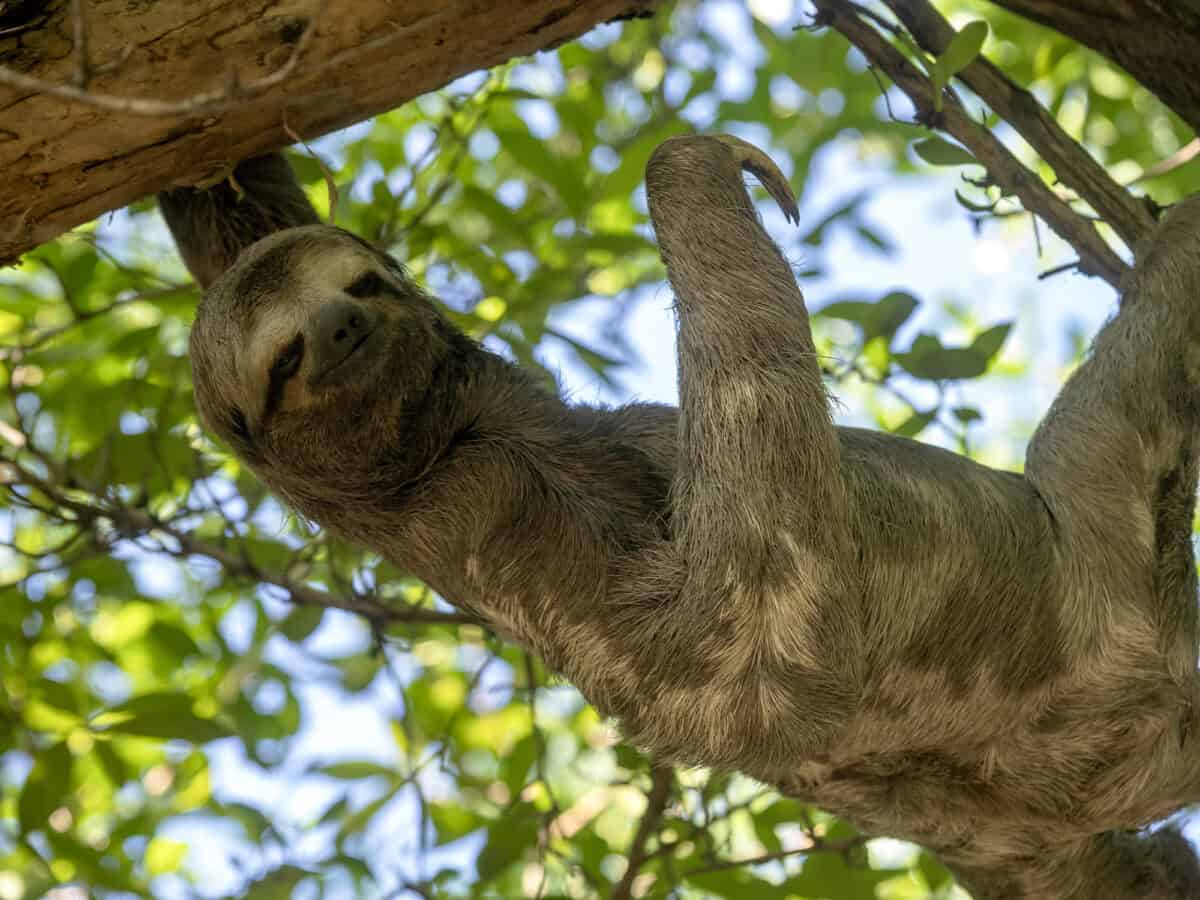Deep within the lush rainforests of Central and South America, one of nature’s most fascinating symbiotic relationships unfolds in slow motion. Sloths, those iconic slow-moving mammals, aren’t just solitary creatures—they’re walking ecosystems. Their thick, coarse fur serves as home to a remarkable diversity of organisms, creating miniature worlds that thrive in the canopy. This relationship has evolved over millions of years, resulting in a complex interdependence that benefits both the sloth and its tiny inhabitants.
What makes this relationship particularly special is its complexity and scale. A single sloth can host up to 950 moths, beetles, cockroaches, fungi, algae, and various microorganisms in its fur. This biodiversity isn’t just a curiosity—it represents an intricate network of interactions that helps sustain rainforest ecosystems. As we examine this phenomenon more closely, we discover a powerful example of nature’s interconnectedness and the unexpected ways that even the slowest creatures contribute to ecological balance.
The Unique Structure of Sloth Fur
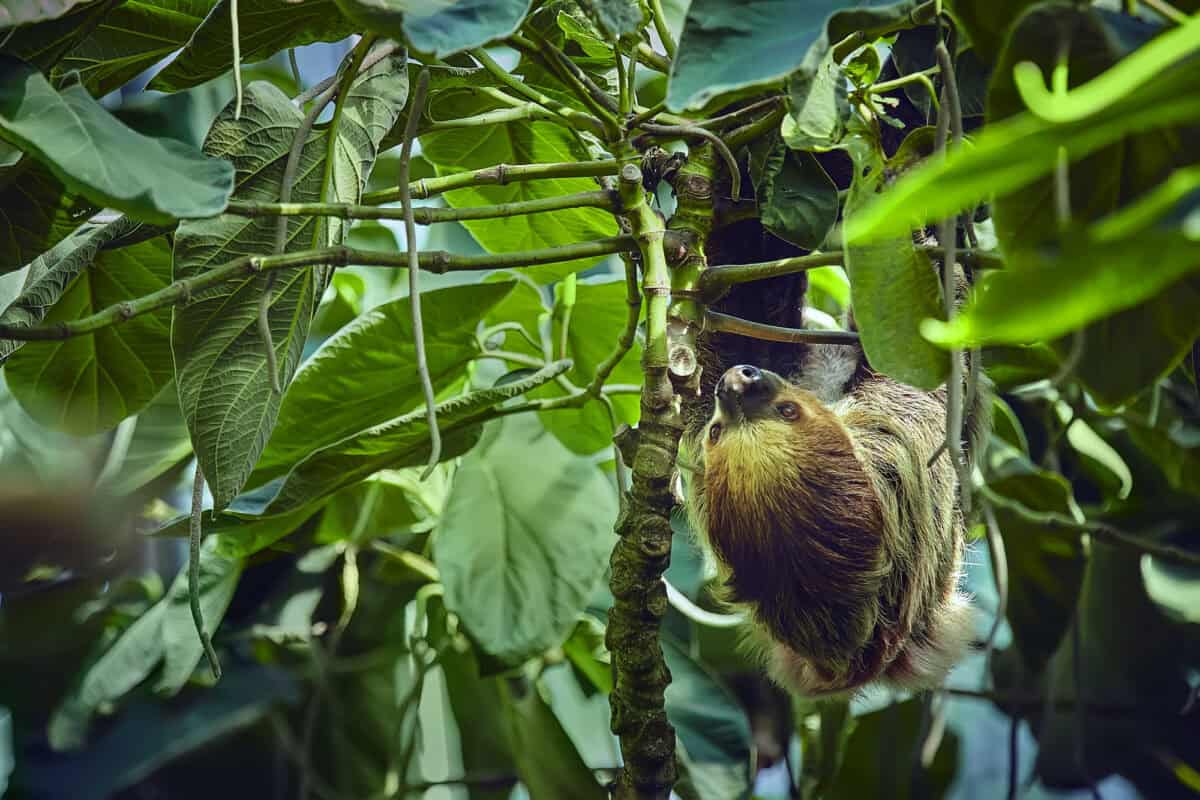
Sloth fur possesses several distinctive characteristics that make it an ideal habitat for other organisms. Unlike most mammals, sloth hair grows in the opposite direction—from belly to back—which helps water run off during heavy tropical downpours. This peculiar growth pattern creates numerous small crevices and pockets where tiny creatures can find shelter. The individual hairs themselves are thick, grooved, and can reach up to 4 inches in length, providing ample surface area for colonization.
Additionally, sloth fur contains specialized cracks called “cortical fissures” that absorb and retain moisture from the humid rainforest environment. These microscopic features create ideal growing conditions for algae, fungi, and other microorganisms. The fur’s texture and structure effectively transform each sloth into a mobile landscape with various “microclimates” supporting different types of inhabitants. This architectural marvel of nature has evolved specifically to support its miniature ecosystem, highlighting how physical adaptations can create new ecological opportunities.
Algae: The Foundation of the Sloth’s Living Coat
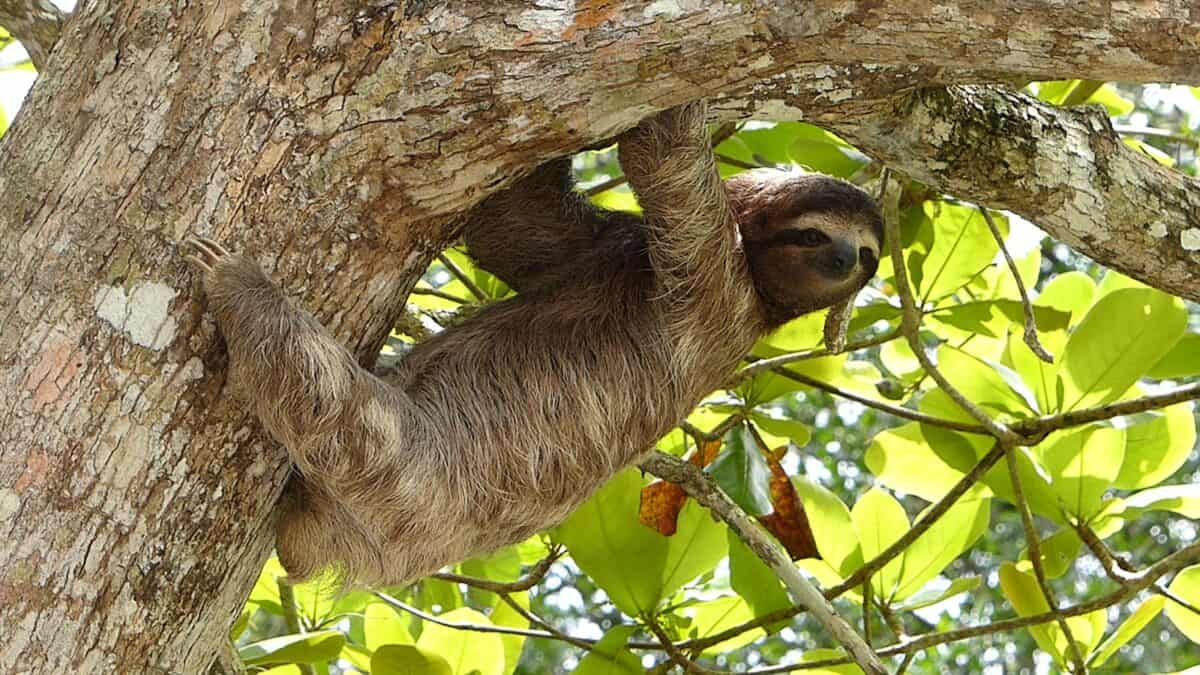
At the core of the sloth’s mini-ecosystem is a symbiotic relationship with algae, primarily species of green algae from the genus Trichophilus. These algae find perfect growing conditions in sloth fur, with consistent humidity, protection from harsh sunlight, and access to minerals from the sloth’s skin. The relationship benefits the sloth enormously—the green algae provide excellent camouflage against predators in the leafy canopy, helping these slow-moving mammals blend seamlessly into their surroundings.
Research has shown that this algae is species-specific, with different types found only on particular sloth species, suggesting a long evolutionary history of co-adaptation. The algae receives nitrogen compounds from the sloth’s skin secretions, while the sloth gains not only camouflage but potentially nutritional benefits as well. Some scientists hypothesize that sloths may absorb nutrients from the algae through their skin or by licking their fur, providing supplementary nutrition to their leaf-based diet. This fundamental relationship forms the foundation upon which the entire fur ecosystem is built.
Moths and Beetles: The Mobile Inhabitants
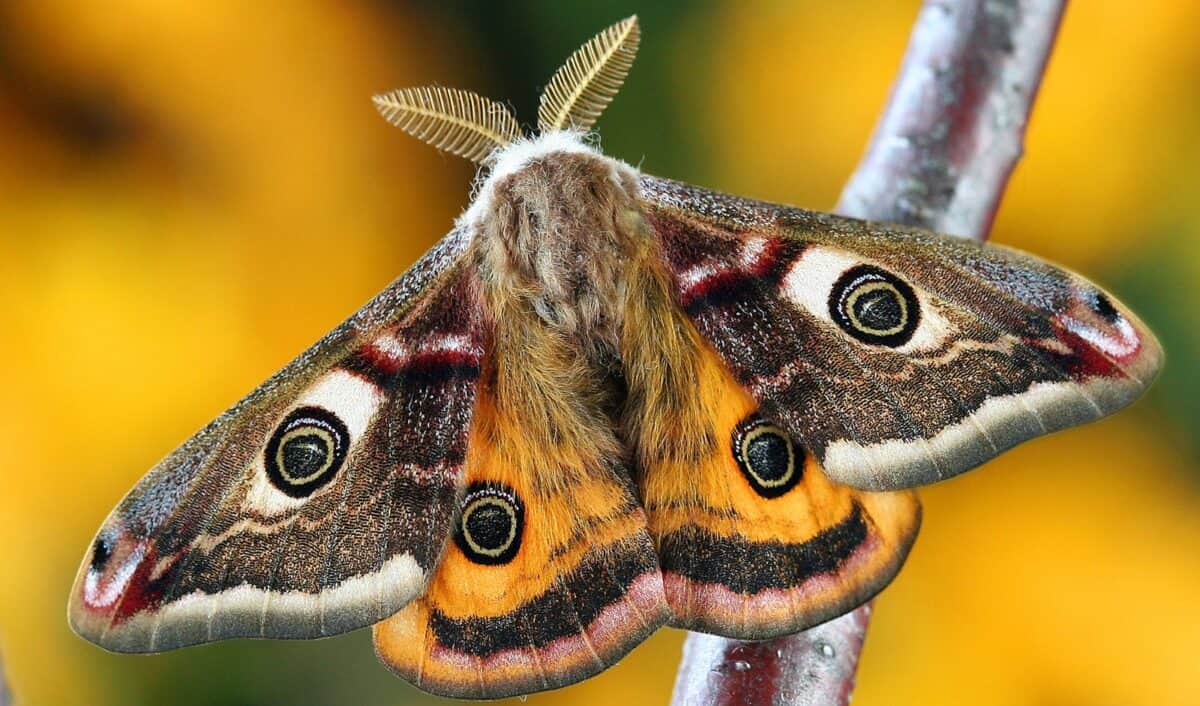
Among the most fascinating residents of sloth fur are the moths and beetles that have evolved to live nowhere else on Earth. The sloth moth (Cryptoses choloepi) has a life cycle completely dependent on its sloth host. When a female sloth descends to the forest floor once a week to defecate—a risky journey for such a slow-moving animal—the moths take the opportunity to lay their eggs in the sloth’s dung. After hatching, the larvae feed on the dung, and adult moths later fly up to find another sloth host.
Various beetle species have also adapted to life in sloth fur, with some feeding on the algae while others prey on smaller invertebrates, creating a multi-level food web. These insects contribute to the ecosystem by aerating the fur, controlling populations of other organisms, and distributing nutrients. The relationship showcases remarkable evolutionary specialization—these insects have developed specific adaptations for navigating, feeding, and reproducing within the unique environment of sloth fur, demonstrating how even the most specialized ecological niches can support complex communities.
Fungi and Microorganisms: The Invisible Community

Beyond the visible inhabitants, sloth fur hosts a diverse community of microscopic life. Various fungi species thrive in the humid, protected environment, breaking down dead organic matter and recycling nutrients within the mini-ecosystem. Recent studies using DNA sequencing have identified dozens of fungal species previously unknown to science living exclusively in sloth fur. These fungi play crucial roles in decomposition and nutrient cycling, while also potentially producing compounds that help protect the sloth from harmful pathogens.
The fur also harbors a rich microbiome of bacteria and other microorganisms that contribute to the overall health of the ecosystem. Some bacteria form symbiotic relationships with the algae, providing nutrients in exchange for carbon compounds produced through photosynthesis. Others may help protect the sloth from skin infections by outcompeting harmful microbes. This microscopic community represents one of the least understood aspects of the sloth’s mini-ecosystem but likely plays a fundamental role in maintaining its balance and supporting the health of the host animal.
Mutual Benefits: How Sloths Gain from Their Passengers
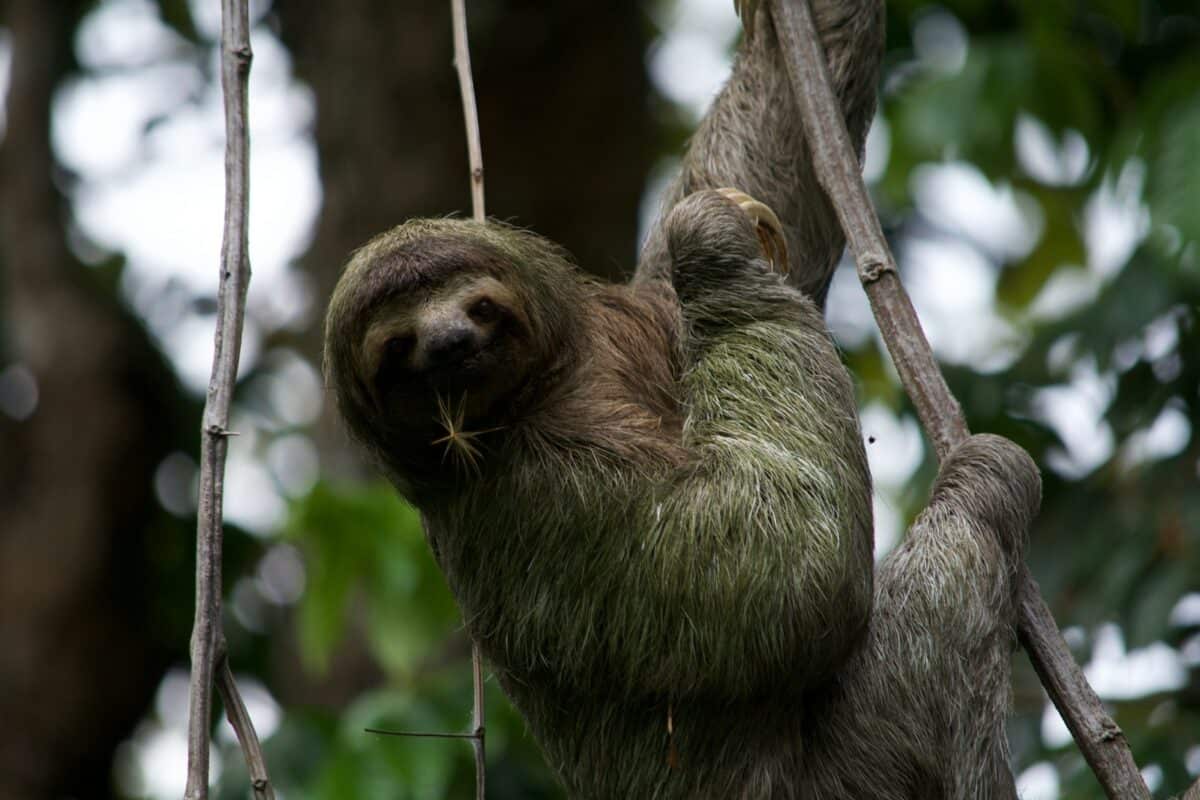
While hosting a diverse community of organisms might seem burdensome, sloths actually derive significant benefits from their fur inhabitants. The most obvious advantage is camouflage—the green algae helps three-toed sloths blend perfectly with the forest canopy, providing crucial protection from predators like harpy eagles and jaguars. This camouflage is so effective that researchers sometimes have difficulty spotting sloths despite their relatively large size.
Beyond camouflage, sloths may receive nutritional benefits through their relationship with fur organisms. When grooming, they likely ingest algae, fungi, and small invertebrates that provide supplementary protein, vitamins, and minerals to their nutrient-poor leaf diet. Some researchers also suggest that compounds produced by fur microorganisms might help protect sloths from parasites and disease-causing pathogens. The relationship appears to be so beneficial that sloths have evolved behaviors specifically to support their fur ecosystem, including their extremely slow movement, which prevents wind from dislodging their tiny passengers.
Ecosystem Engineers: Sloths’ Role in the Larger Forest
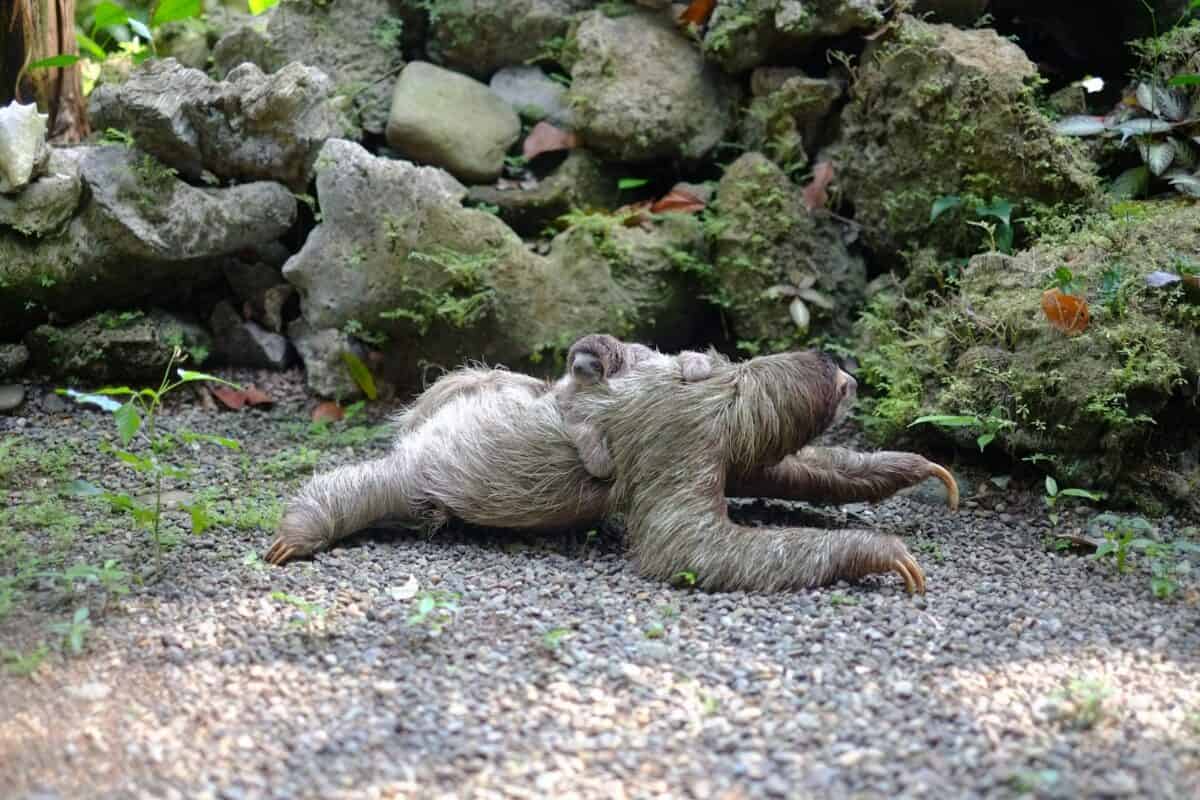
The influence of sloths extends far beyond their own bodies. By hosting these mini-ecosystems, sloths effectively function as “ecosystem engineers”—organisms that create, modify, or maintain habitats. The moths and beetles that live in sloth fur eventually disperse throughout the forest, pollinating plants and contributing to nutrient cycling. When sloths descend to defecate, they deposit not only their waste but also fur inhabitants and their eggs, helping to distribute these specialized species throughout the forest.
Research indicates that areas with healthy sloth populations show increased insect diversity and improved soil fertility near defecation sites. The specialized moths that breed in sloth dung help break down this material quickly, returning nutrients to the forest floor. Some scientists even hypothesize that certain rainforest plants have evolved to depend on the pollination services provided by sloth fur moths, creating intricate webs of dependency. Though moving at an incredibly slow pace, sloths create ripple effects throughout their ecosystem, demonstrating how seemingly minor ecological relationships can have significant impacts.
The Delicate Balance of the Fur Ecosystem
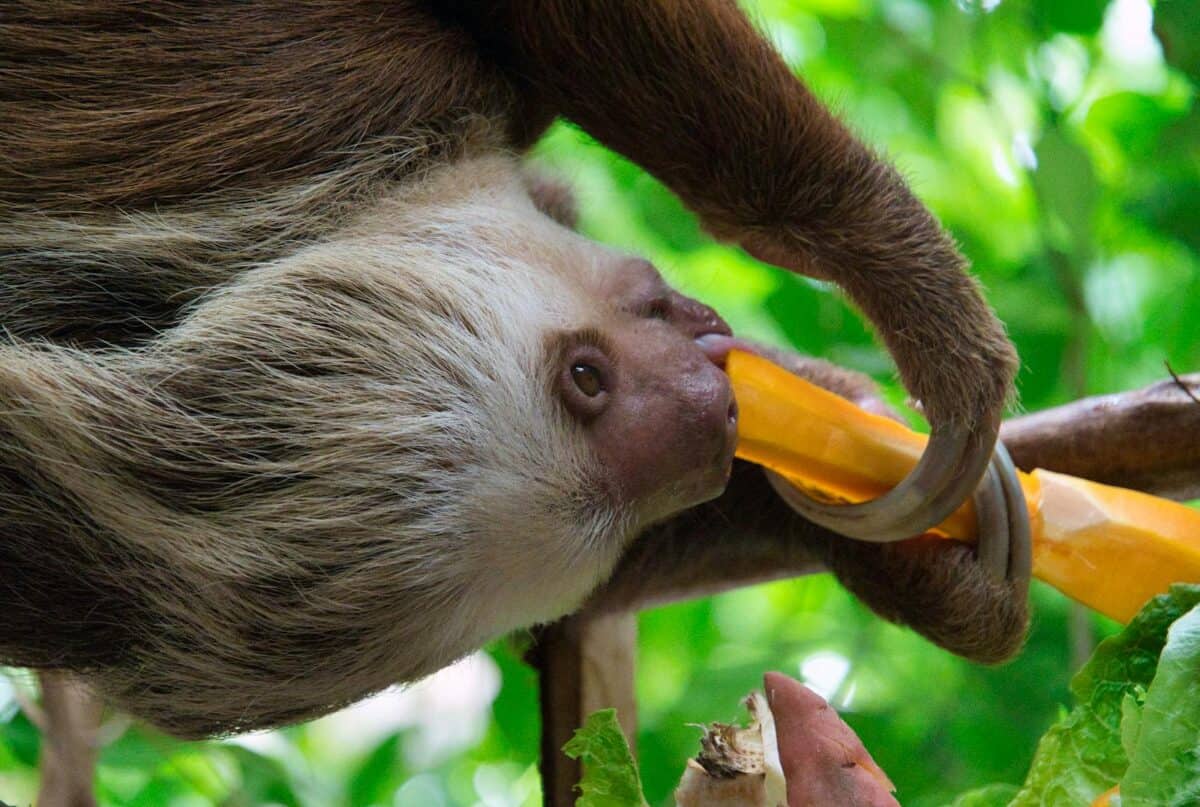
The mini-ecosystem in sloth fur represents a delicate balance that can be disrupted by changes in the sloth’s environment or health. Temperature, humidity, and exposure to sunlight all affect the growth of algae and other organisms. If a sloth becomes ill or stressed, changes in its skin chemistry can alter the composition of its fur community. Studies have shown that captive sloths often lose their algae and many of their fur inhabitants due to differences in their environment and care regimens.
The fur ecosystem also maintains internal checks and balances. Predatory mites and beetles control populations of other organisms, preventing any single species from dominating. Fungi and bacteria compete for resources, creating a dynamic equilibrium. This balance has evolved over millions of years, resulting in a system where each organism occupies a specific niche and contributes to the overall health of the community. Understanding these intricate relationships helps scientists appreciate the complexity of symbiotic interactions and the importance of preserving the conditions that allow them to thrive.
Scientific Discoveries from Studying Sloth Fur
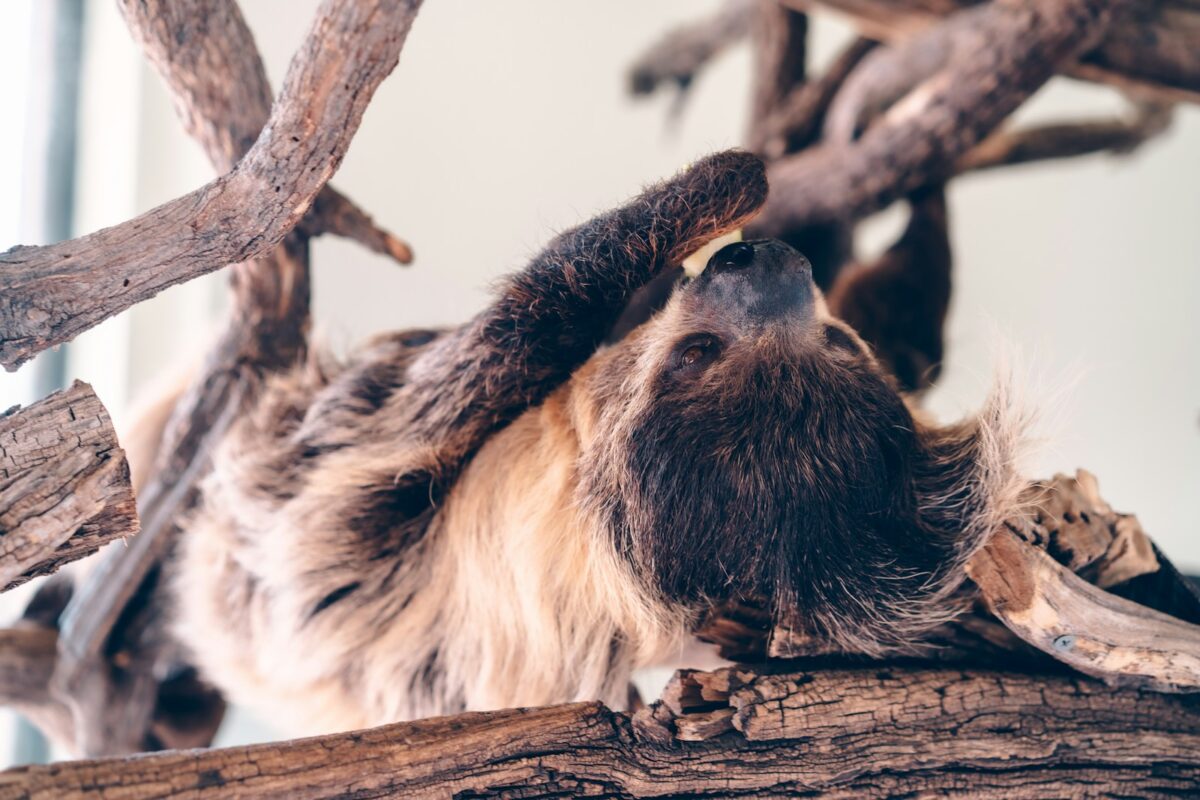
The mini-ecosystems in sloth fur have become valuable subjects for scientific research, yielding discoveries with implications far beyond rainforest canopies. Bioprospecting studies have identified numerous compounds produced by sloth fur fungi and bacteria with potential pharmaceutical applications. Several of these compounds show antimicrobial, anti-cancer, or anti-parasitic properties that could lead to new medications. In 2019, researchers isolated a fungus from sloth fur that produces compounds effective against parasites responsible for malaria and Chagas disease.
Ecologists study these systems to better understand complex symbiotic relationships and how multiple species can coexist in limited spaces. The sloth fur ecosystem serves as an accessible model for studying biodiversity and ecological interactions. Geneticists are also interested in the specialized adaptations of sloth fur organisms, which provide insights into evolutionary processes and host-symbiont co-evolution. These studies highlight how even seemingly simple relationships in nature can yield profound scientific insights and potentially valuable applications for human health and wellbeing.
Conservation Implications
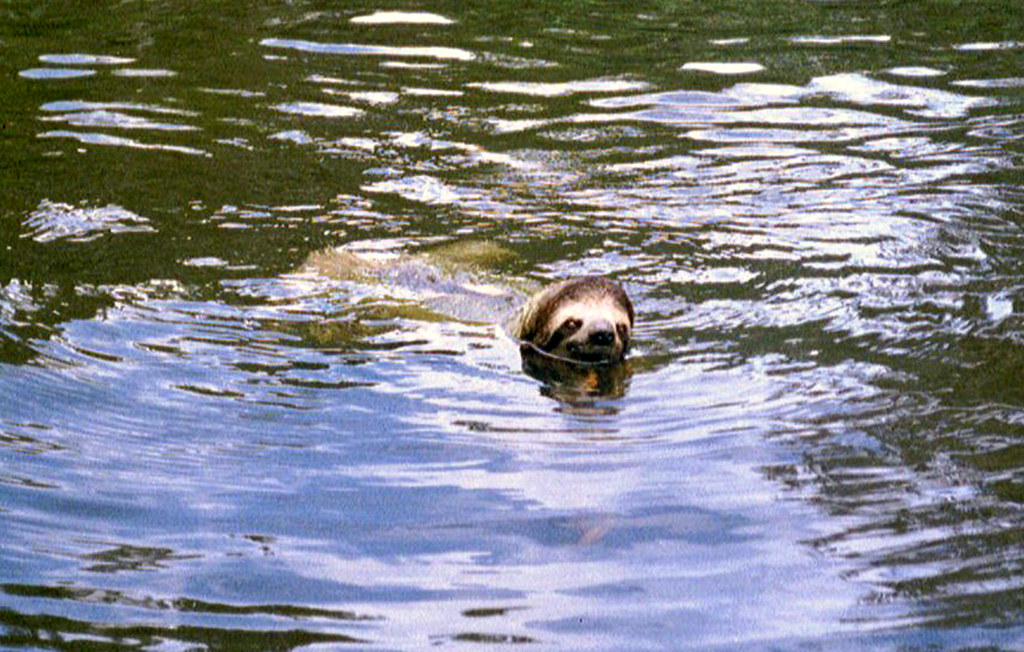
The remarkable mini-ecosystems supported by sloths face numerous threats due to habitat loss, climate change, and direct human impacts. Deforestation in Central and South America reduces available habitat for sloths, consequently threatening all the specialized organisms that depend on them. Climate change alters temperature and precipitation patterns, potentially disrupting the delicate balance required for algae growth and the survival of other fur inhabitants. Additionally, the illegal pet trade removes sloths from their natural environment, effectively eliminating entire ecosystems when a single animal is captured.
Conservation efforts focused on protecting sloths inherently protect these unique mini-ecosystems and all their inhabitants. Scientists argue that the specialized nature of sloth fur organisms—many of which exist nowhere else on Earth—represents an often-overlooked aspect of biodiversity conservation. By preserving intact rainforest habitats and creating protected corridors between fragmented forests, conservationists help ensure the continued existence of these remarkable ecological relationships. The sloth’s mini-ecosystem serves as a compelling example of why biodiversity conservation must consider not just individual species but the complex relationships between them.
Comparing Sloth Species and Their Fur Communities

Not all sloth species support identical fur communities, with notable differences between two-toed and three-toed sloths. Three-toed sloths (genus Bradypus) generally host more diverse and abundant communities, with particularly rich algal growth giving them their characteristic greenish tint. Two-toed sloths (genus Choloepus) typically have less algae but may host greater numbers of certain moth and beetle species. These differences correlate with behavioral and physiological variations between the species—three-toed sloths move even more slowly and have more specialized diets than their two-toed relatives.
Geographic location also influences fur community composition. Sloths in different regions host distinct varieties of organisms adapted to local environmental conditions. A three-toed sloth in Panama might support a significantly different community than one in Brazil, reflecting regional variations in climate, vegetation, and available colonizing species. These differences provide valuable opportunities for comparative studies, helping scientists understand how host biology and environment shape the development of symbiotic communities. The variations between sloth species demonstrate how even subtle differences in host characteristics can lead to distinct ecological outcomes.
Conclusion: Nature’s Slow-Moving Biodiversity Hotspots

The mini-ecosystems supported by sloths represent one of nature’s most extraordinary examples of symbiotic relationships and ecological interdependence. From the algae that provide camouflage to the moths that complete their life cycles in sloth dung, each organism plays a specific role in this complex community. These relationships have evolved over millions of years, resulting in highly specialized adaptations and intricate connections that we are only beginning to understand.
As we face global biodiversity loss and ecosystem degradation, the sloth’s fur community reminds us of the countless subtle yet vital ecological relationships that exist throughout nature. Many of these relationships remain undiscovered or poorly understood, highlighting the importance of conservation efforts that preserve not just individual species but entire ecosystems and the connections between them. The sloth, moving slowly through the rainforest canopy, carries with it an entire world of life—a powerful reminder that in nature, nothing exists in isolation.
By studying and protecting these remarkable living systems, we gain insights into the complexity of life on Earth and the countless ways that organisms support one another. The humble sloth, often characterized by its slowness, proves to be an ecological powerhouse, supporting biodiversity and maintaining rainforest health through its unique biological relationships. In the end, these slow-moving mammals teach us that sometimes the most important ecological contributions come from the most unexpected sources, moving at nature’s own unhurried pace.
- How Sloths Help Support Mini-Ecosystems in Their Fur - August 9, 2025
- Eagles vs. Snakes: Who Would Win? - August 9, 2025
- Why Pandas Were Once Nearly Extinct—and How China Saved Them - August 9, 2025

